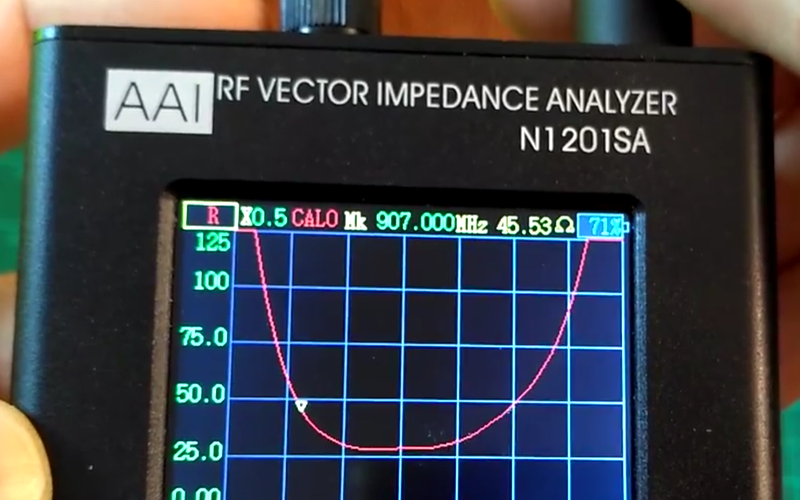There was a time when the measure of a transmitting radio antenna was having it light an incandescent bulb. A step up was a classic SWR/Power meter that showed you forward and reflected power. Over the years, a few other instruments have tried to provide a deeper look into antenna performance. However, the modern champion is the antenna analyzer which is a way of measuring vector impedance.
[Captain Science] did a review of an inexpensive N1201SA analyzer. This device is well under $200 from the usual Chinese sellers. The only thing a bit odd is the frequency range which is 140 MHz to 2700 MHz. For some extra money (about $80 or $100 more) you can drop the low-end frequency to just under 35 MHz.
In addition to the review, you might want to read the manual. The device can measure resistance, reactance, SWR, and S11 (the S parameter for return loss). It also displays the impedance and effective inductance. [Captain Science] thought the interface was easy to use, but he did wish for a numeric keypad.
While you might think this is a great toy for ham radio operators, it would be useful for anyone wanting an antenna in this frequency range. For example, if you are trying to maximize WiFi range or figure out the greatest ever antenna on your drone, this could be for you (as long as you are not on the 5 GHz band).
If this is still too expensive and you want a less flashy solution, you can try an Arduino-based design. There’s plenty of them around.
















A classic mistake was a bad feed line giving awesome VWSR readings… ;-)
I tried a ADF4350 based NWT4000-2 with a wide band tracking noise source even though this model can generate a signal while scanning, unlike the $65 clones http://www.dalbert.net/?p=219 listed as “138MHz-4.4GHz” or “0.1MHz-500MHz”on ebay which need the external $14 noise source while scanning.
However, note a good wide-band bridge can cost about $50.
You would also need a 3dB and 6dB load to calibrate/test the rig as well, but the software is somewhat usable:
http://www.dl4jal.eu/hfm9.htm
The DIY meters are pretty good if you actually figure out how to set-up, calibrate, an run the scan. They are within about 5-10% error of the lab equipment, but a fraction of the cost of getting fined.
This reminds me of the Rf explorer w/ one of the optional upgrades, radio wise…
This analyzer mite be inspired by this http://j3.rf-explorer.com/ mite use the same or similar radio module…
This radio module, not the whole board https://www.seeedstudio.com/RFEM-WSUB3G-Module-p-1264.html
I like the color display though not the button lay out, the case style seems similar…
2:30 a.m. here got to go shut eye time
later
I should have watched the video first, I did not realize the top knob was a rotary encoder not a pot…
later
With no incandescent light bulbs how will we be able to tune up an HF rig, yet alone brood baby chicks?
You might do what I did as a teen with my WWII-era Command set, built for B-17 bombers. I tuned for minimum blue glow in the two 1625 tubes. That worked as good as a plate current meter.
Well, with the low end cut off at 35MHz for the more expensive models and even higher for the cheaper ones I guess you can still use an incandescent light bulb. Did they stop selling those in your part of the world? I think they were supposed to stop selling them here for the most part.. except.. I still see them in the big box hardware store. But.. if they really did get rid of them where you are… what do they use to illuminate the inside of an oven? Certainly nothing with a PCB in it! Maybe you can still get an incandescent oven bulb.